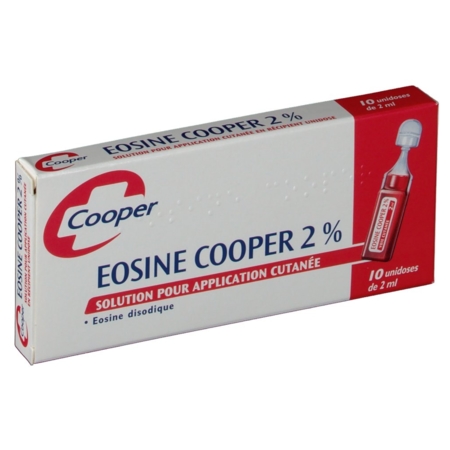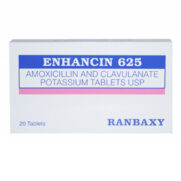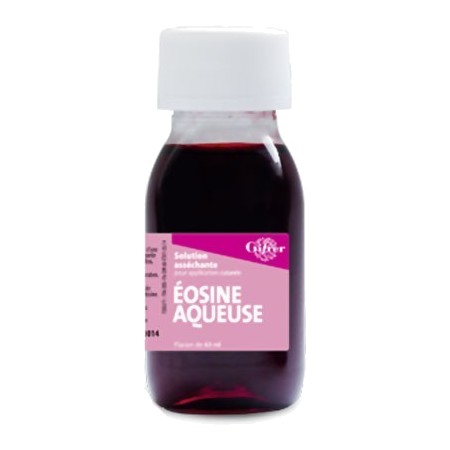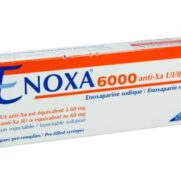Insuman Comb 30 100 IU/ml suspension for injection in apre-filled pen
What is it and how is it used?
Insuman Comb 30 is a fluid (suspension) for injection under the skin. The insulin contained in Insuman Comb 30 is made by a biotechnology process and is identical with the body’s own insulin.
Insuman Comb 30 is an insulin preparation with a gradual onset and long duration of action. It comes in cartridges sealed in disposable pen injectors, OptiSet.
Insuman Comb 30 is used to reduce high blood sugar in patients with diabetes mellitus. Diabetes mellitus is a disease where your body does not produce enough insulin to control the level of blood sugar.
What do you have to consider before using it?
Do not use Insuman Comb 30
If you are allergic (hypersensitive) to insulin or any of the other ingredients of Insuman Comb 30.
Take special care with Insuman Comb 30
Follow closely the instructions for dosage, monitoring (blood and urine tests), diet and physical activity (physical work andexercise), injection technique as discussed with your doctor.
Special patient groups
If you have liver or kidneys problems or if you are elderly, speak to your doctor as you may need a lower dose.
Travel
Before travelling, consult your doctor. You may need to talk about
- the availability of your insulin in the country you are visiting,
- supplies of insulin, injection syringes etc.,
- correct storage of your insulin while travelling,
- timing of meals and insulin administration while travelling,
- the possible effects of changing to different time zones,
- possible new health risks in the countries to be visited,
- what you should do in emergency situations when you feel unwell or become ill.
Illnesses and injuries
In the following situations, the management of your diabetes may require a lot of care:
- If you are ill or have a major injury then your blood sugar level may increase (hyperglycaemia).
- If you are not eating enough, your blood sugar level may become too low (hypoglycaemia). In most cases you will need a doctor. Make sure that you contact a doctor early.
If you have type 1 diabetes (insulin dependent diabetes mellitus), do not stop your insulin and continue to get enough carbohydrates. Always tell people who are caring for you or treating you that you require insulin.
Some patients with long-standing type 2 diabetes mellitus and heart disease or previous stroke who were treated with pioglitazone and insulin experienced the development of heart failure. Inform your doctor as soon as possible if you experience signs of heart failure such as unusual shortness of breath or rapid increase in weight or localised swelling (oedema).
Using other medicines
Some medicines cause changes in the blood sugar level (decrease, increase or both depending on the situation). In each case, it may be necessary to adjust your insulin dosage to avoid blood sugar levels that are either too low or too high. Be careful when you start or stop taking another medicine.
Tell your doctor or pharmacist if you are taking or have recently taken any other medicines, including medicines obtained without a prescription. Before taking a medicine ask your doctor if it can affect your blood sugar level, and what action, if any, you need to take.
Medicines that may cause your blood sugar level to fall (hypoglycaemia) include:
- all other medicines to treat diabetes,
- angiotensin converting enzyme (ACE) inhibitors (used to treat certain heart conditions or high blood pressure),
- disopyramide (used to treat certain heart conditions),
- fluoxetine (used to treat depression),
- fibrates (used to lower high levels of blood lipids),
- monoamine oxidase (MAO) inhibitors (used to treat depression),
- pentoxifylline, propoxyphene, salicylates (such as aspirin, used to relieve pain and lower fever),
- sulfonamide antibiotics.
Medicines that may cause your blood sugar level to rise (hyperglycaemia) include:
- corticosteroids (such as « cortisone », used to treat inflammation),
- danazol (medicine acting on ovulation),
- diazoxide (used to treat high blood pressure),
- diuretics (used to treat high blood pressure or excessive fluid retention),
- glucagon (pancreas hormone used to treat severe hypoglycaemia),
- isoniazid (used to treat tuberculosis),
- oestrogens and progestogens (such as in the contraceptive pill used for birth control),
- phenothiazine derivatives (used to treat psychiatric disorders),
- somatropin (growth hormone),
- sympathomimetic medicines (such as epinephrine [adrenaline] or salbutamol, terbutaline used to treat asthma),
- thyroid hormones (used to treat the thyroid gland disorders),
- protease inhibitors (used to treat HIV),
- atypical antipsychotic medications (such as olanzapine and clozapine).
Your blood sugar level may either rise or fall if you take:
- beta-blockers (used to treat high blood pressure),
- clonidine (used to treat high blood pressure),
- lithium salts (used to treat psychiatric disorders). Pentamidine (used to treat some infections caused by parasites) may cause hypoglycaemia which may sometimes be followed by hyperglycaemia.
Beta-blockers like other sympatholytic medicines (such as clonidine, guanethidine, and reserpine) may weaken or suppress entirely the first warning symptoms which help you to recognise a hypoglycaemia.
If you are not sure whether you are taking one of those medicines ask your doctor or pharmacist.
Using Insuman Comb 30 with food and drink
Your blood sugar levels may either rise or fall if you drink alcohol.
Pregnancy and breast-feeding
Ask your doctor or pharmacist for advice before taking any medicine.
Inform your doctor if you are planning to become pregnant, or if you are already pregnant. Your insulin dosage may need to be changed during pregnancy and after giving birth. Particularly careful control of your diabetes, and prevention of hypoglycaemia, is important for the health of your baby. However, there is no experience with the use of Insuman Comb 30 in pregnant women.
If you are breast-feeding consult your doctor as you may require adjustments in your insulin doses and your diet.
Driving and using machines
Your ability to concentrate or react may be reduced if:
- you have hypoglycaemia (low blood sugar levels),
- you have hyperglycaemia (high blood sugar levels),
- you have problems with your sight. Keep this possible problem in mind in all situations where you might put yourself and others at risk (such as driving a car or operating machines). You should contact your doctor for advice on driving if:
- you have frequent episodes of hypoglycaemia,
- the first warning symptoms which help you to recognise hypoglycaemia are reduced or absent.
Important information about some of the ingredients of Insuman Comb 30
This medicinal product contains less than 1 mmol (23 mg) sodium per dose, i.e. it is essentially ?sodium-free?.
How is it used?
Dosage
Based on your life-style and the results of your blood sugar (glucose) tests, your doctor will
- determine how much Insuman Comb 30 per day you will need,
- tell you when to check your blood sugar level, and whether you need to carry out urine tests,
- tell you when you may need to inject a higher or lower dose of Insuman Comb 30.
Many factors may influence your blood sugar level. You should know these factors so that you are able to react correctly to changes in your blood sugar level and to prevent it from becoming too high or too low. See the box at the end of this leaflet for further information.
Frequency of administration
Insuman Comb 30 is injected under the skin 30 to 45 minutes before a meal.
Method of administration
Do NOT inject Insuman Comb 30 into a vein.
OptiSet delivers insulin in increments of 2 units up to a maximum single dose of 40 units.
Your doctor will show you in which area of the skin you should inject your insulin. With each injection, change the puncture site within the particular area of skin that you are using.
How to handle OptiSet
Insuman Comb 30 comes in cartridges sealed in disposable pen injectors, OptiSet.
Read carefully the « OptiSet Instructions for Use » included in this package leaflet. You must use the pen as described in these Instructions for Use.
A new injection needle must be attached before each use. Only use needles that have been approved for use with OptiSet.
A safety test must be performed before each injection.
Mix the insulin well and check it before first use. Later, you must mix the insulin well again immediately before each injection.
Mixing is best done by gently tilting the pen back and forth at least 10 times. To assist in mixing, three tiny metal balls are present in the cartridge.
After mixing, the suspension must have a uniform milky-white appearance. It must not be used if it remains clear or if, for example, clumps, flakes, particles or anything similar are in the suspension or on the sides or bottom of the cartridge in the pen. A new pen with a uniform suspension on mixing must then be used.
Always use a new pen if you notice that your blood sugar control is unexpectedly getting worse. If you think you may have a problem with OptiSet, refer to the Questions and Answers section of the attached OptiSet Instructions for Use, or have it checked by your doctor or pharmacist.
To prevent the possible transmission of disease, each pen must be used by one patient only.
Special care before injection
Make sure that neither alcohol nor other disinfectants or other substances contaminate the insulin.
Do not mix insulin with any other medicines. Insuman Comb 30, pre-filled pen,OptiSet, is not designed to allow any other insulin to be mixed in the cartridge.
Empty pens must not be re-filled and must be properly discarded.
Do not use the OptiSet if it is damaged or not working properly (due to mechanical defects), it has to be discarded and a new OptiSet has to be used.
Mistakes in dosage
If you use more Insuman Comb 30 than you should
- If you have injected too much Insuman Comb 30, your blood sugar level may become too low (hypoglycaemia). Check your blood sugar frequently. In general, to prevent hypoglycaemia you must eat more food and monitor your blood sugar. For information on the treatment of hypoglycaemia, see box at the end of this leaflet.
If you forget to use Insuman Comb 30
- If you have missed a dose of Insuman Comb 30 or if you have not injected enough insulin, your blood sugar level may become too high (hyperglycaemia). Check your blood sugar frequently. For information on the treatment of hyperglycaemia, see box at the end of this leaflet.
- Do not take a double dose to make up for a forgotten dose.
If you stop using Insuman Comb 30
This could lead to severe hyperglycaemia (very high blood sugar) and ketoacidosis (build-up of acid in the blood because the body is breaking down fat instead of sugar). Do not stop Insuman Comb 30 without speaking to a doctor, who will tell you what needs to be done.
If you have any further questions on the use of this product, ask your doctor or pharmacist.
Insulin Mix-ups
You must always check the insulin label before each injection to avoid medication mix-ups between Insuman Comb 30 and other insulins.
What are possible side effects?
Like all medicines, Insuman Comb 30 can cause side effects, although not everybody gets them.
As with all insulin therapy, the most frequent side effect is hypoglycaemia (low blood sugar). Serious hypoglycaemia may cause a heart attack or brain damage and may be life-threatening. For further information on the side effects of low blood sugar or high blood sugar, see the box at the end of this leaflet.
Severe allergic reactions to insulin may occur which may become life-threatening. Such reactions to insulin or to the excipients can cause large-scale skin reactions (rash and itching all over the body), severe swelling of skin or mucous membranes (angiooedema), shortness of breath, a fall in blood pressure with rapid heart beat and sweating.
Side effects reported commonly (Seen in less than 1 in 10 but more than 1 in 100 patients)- Oedema
Insulin treatment may cause temporary build-up of water in the body with swelling in the calves and ankles.
– Injection site reactions
Side effects reported uncommonly (Seen in less than 1 in 100 but more than 1 in 1000 patients)- Severe allergic reaction with low blood pressure (shock)
– Injection site urticaria (itchy rash)
Other side effects include
– Systemic allergic reactions
Associated symptoms may include large-scale skin reactions (rash and itching all over the body), severe swelling of skin or mucous membranes (angiooedema), shortness of breath, a fall in blood pressure with rapid heart beat and sweating.- Eye reactions
A marked change (improvement or worsening) in your blood sugar control can disturb your vision temporarily. If you have proliferative retinopathy (an eye disease related to diabetes) severe hypoglycaemic attacks may cause temporary loss of vision.
– Skin changes at the injection site (lipodystrophy)
If you inject your insulin too often at the same skin site, fatty tissue under the skin at this site may either shrink or thicken. Insulin that you inject in such a site may not work very well. Changing the injection site with each injection may help to prevent such skin changes.
– Skin and allergic reactions
Other mild reactions at the injection site (such as injection site redness, unusually intense pain on injection site, itching, injection site swelling or injection site inflammation) may occur. They can also spread around the injection site. Most minor reactions to insulins usually resolve in a few days to a few weeks.
Insulin treatment can cause the body to produce antibodies to insulin (substances that act against insulin). However, only very rarely, this will require a change to your insulin dosage.
Tell your doctor or pharmacist if you notice any of the side effects listed above or any other unwanted or unexpected effects. To prevent serious reactions, speak to a doctor immediately if a side effect is severe, occurs suddenly or gets worse rapidly.
How should it be stored?
Keep out of the reach and sight of children.
Do not use Insuman Comb 30 after the expiry date which is stated on the carton and on the label of the cartridge. The expiry date refers to the last day of that month.
Not in-use pens
Store in a refrigerator (2°C – 8°C). Do not freeze. Do not put the pre-filled pen next to the freezer compartment or a freezer pack. Keep the pen in the outer carton in order to protect from light.
In-use pens
Pre-filled pens in-use or carried as a spare may be stored for a maximum of 4 weeks not above 25°C and away from direct heat (for example next to a heating unit) or direct light (direct sunlight or next to a lamp). The pen in-use must not be stored in a refrigerator. Do not use the pen after this time period.
Medicines should not be disposed of via wastewater or household waste. Ask your pharmacist how to dispose of medicines no longer required. These measures will help to protect the environment.
Further information
What Insuman Comb 30 contains
- The active substance is insulin human. One ml of Insuman Comb 30 contains 100 IU (International Units) of the active substance insulin human. 30% of the insulin is dissolved in water; the other 70% is present as tiny crystals of insulin protamine.
- The other ingredients are: protamine sulphate, metacresol, phenol, zinc chloride, sodium dihydrogen phosphate dihydrate, glycerol, sodium hydroxide, hydrochloric acid (for pH adjustment) and water for injections.
What Insuman Comb 30 looks like and contents of the pack
After mixing, Insuman Comb 30 is a uniformly milky fluid (suspension for injection), with no clumps, particles or flocculation visible.
Insuman Comb 30 is supplied in pre-filled pens, OptiSet, containing 3 ml suspension, (300 IU). Packs of 3, 4, 5, 6, 9 and 10 pens of 3 ml are available. Not all pack sizes may be marketed.
Marketing Authorisation Holder and Manufacturer
Sanofi-Aventis Deutschland GmbH
D-65926 Frankfurt am Main
Germany
For any information about this medicine, please contact the local representative of the Marketing Authorisation Holder:
BelgiëBelgiqueBelgien sanofi-aventis Belgium TélTel 32 02 710 54 00 LuxembourgLuxemburg sanofi-aventis Belgium TélTel 32 02 710 54 00 BelgiqueBelgien
sanofi-aventis Bulgaria EOOD . 359 02 970 53 00 Magyarország sanofi-aventis zrt., Magyarország Tel. 36 1 505 0050
eská republika sanofi-aventis, s.r.o. Tel 420 233 086 111 Malta sanofi-aventis Malta Ltd. Tel 356 21493022
Danmark sanofi-aventis Denmark AS Tlf 45 45 16 70 00 Nederland sanofi-aventis Netherlands B.V. Tel 31 0182 557 755
Deutschland Sanofi-Aventis Deutschland GmbH Tel 49 0180 2 222010 Norge sanofi-aventis Norge AS Tlf 47 67 10 71 00
Eesti sanofi-aventis Estonia OÜ Tel 372 627 34 88 Österreich sanofi-aventis GmbH Tel 43 1 80 185 0
sanofi-aventis AEBE 30 210 900 16 00 Polska sanofi-aventis Sp. z o.o. Tel. 48 22 280 00 00
España sanofi-aventis, S.A. Tel 34 93 485 94 00 Portugal sanofi-aventis – Produtos Farmacêuticos, Lda Tel 351 21 35 89 400
România sanofi-aventis România S.R.L. Tel 40 0 21 317 31 36 France sanofi-aventis France Tél 0 800 222 555 Appel depuis létranger 33 1 57 63 23 23
Ireland sanofi-aventis Ireland Ltd. Tel 353 0 1 403 56 00 Slovenija sanofi-aventis d.o.o. Tel 386 1 560 48 00
Ísland Vistor hf. Sími 354 535 7000 Slovenská republika sanofi-aventis Pharma Slovakia s.r.o. Tel 421 2 33 100 100
SuomiFinland sanofi-aventis Oy PuhTel 358 0 201 200 300 Italia sanofi-aventis S.p.A. Tel 800 13 12 12 domande di tipo tecnico 39 02 393 91 altre domande e chiamate dallestero sanofi-aventis Cyprus Ltd. 357 22 871600 Sverige sanofi-aventis AB Tel 46 08 634 50 00
Latvija sanofi-aventis Latvia SIA Tel 371 67 33 24 51 United Kingdom sanofi-aventis Tel 44 0 1483 505 515
Lietuva
UAB sanofi-aventis Lietuva
Tel: +370 5 2755224










